Specialized has released what it claims is its lightest ever off-road shoe, the Exos, along with a host of revamped XC mountain bike tyres, all aimed at riders for whom speed is key to performance.
Cross-country really seems to be the hottest ticket in town right now, and with the World Cup season off to a scintillating start, the skinny tyred, leg-shaven, off-road world is enjoying its time in the limelight.
Specialized has a long history in XC too, with the Epic HT, Epic full-sus and Epic EVO all being some of the most sought after bikes on the scene.
Specialized S-Works Exos shoe details
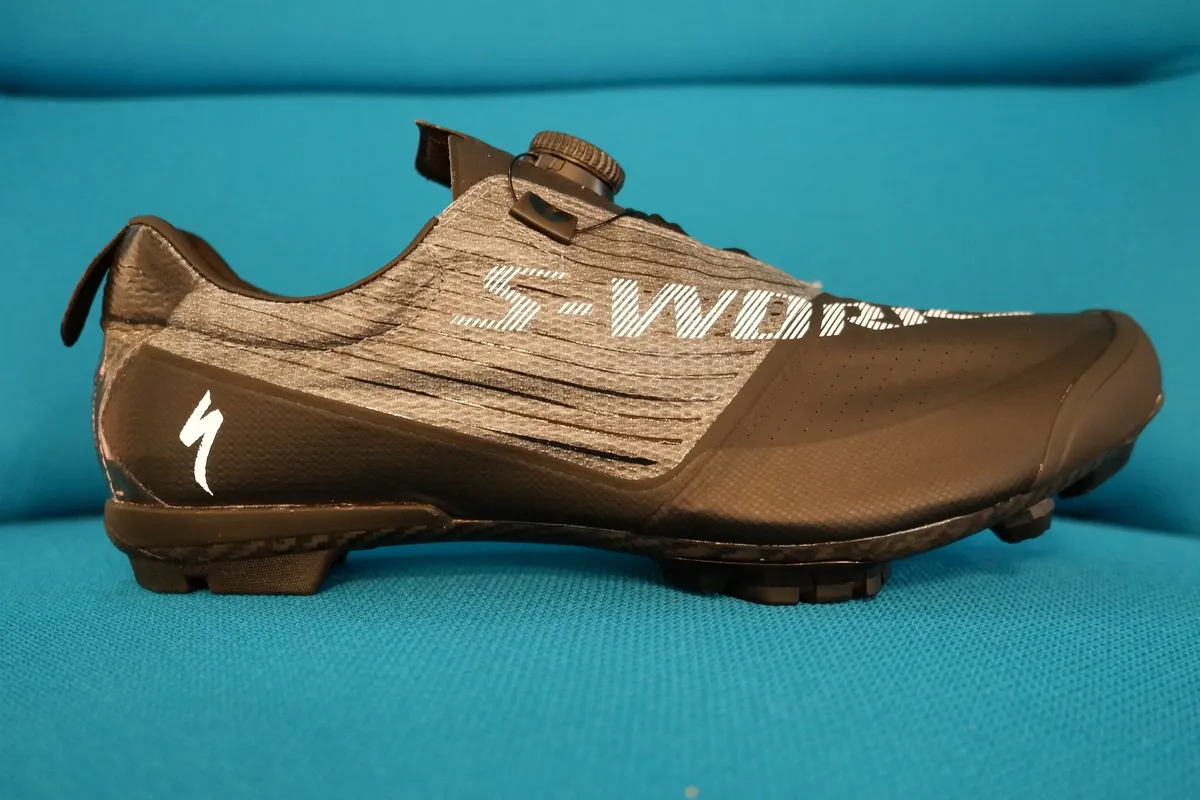
The S-Works Exos mountain bike shoe is claimed to be the lightest off-road shoe the brand has ever produced, and, on our scales, it weighs 516g per pair – which is around 100g lighter than the S-Works Recon.
We'll start with the fairly standard sole. It's carbon fibre, as you'd expect, with a series of non-replaceable lugs. At the front of the shoe is a pair of removable studs – something cross-country and cyclocross riders will appreciate in muddier race conditions.
The middle of the shoe has a reasonably long cleat channel, allowing the cleats to get pretty far back in the shoe, with markers to help with alignment.

As seen on the Recon and Specialized's road shoes, the sole has a stiffness rating of 13, which is as stiff as Specialized's shoes go – with the aim of transmitting as much power as possible to the pedals, via a FACT carbon sole.
The insole features the brand's Body Geometry profile concept, which adds arch support and helps tilt the foot to keep knee and hip alignment optimal. While we're not physiologists, previous experience of Specialized's shoes suggests they should be comfortable.
Heading towards the front is a toe box that features protection from rock and stump strikes.
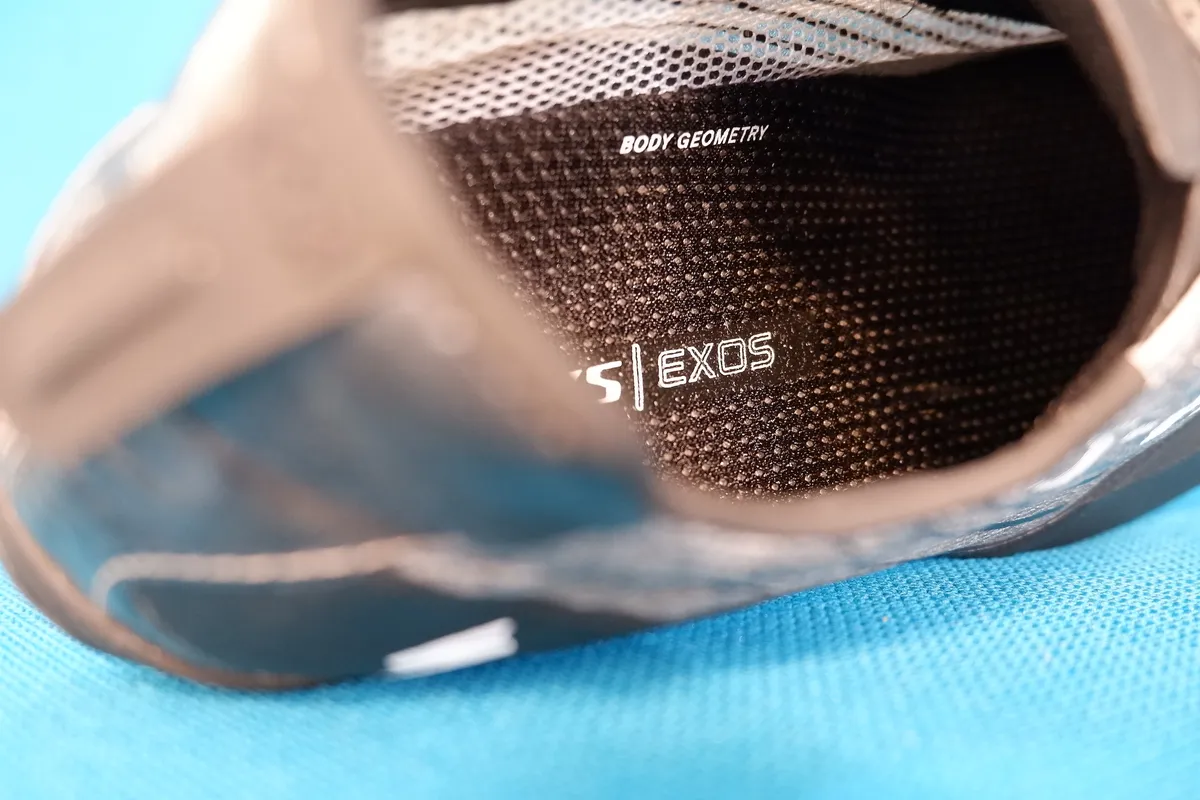
It's the upper that's the most interesting, though.
It uses its Dyneema material, which is a super-thin, super-light, super-supple material. This helps shave that weight and its suppleness should help keep the shoe nicely in contact with the foot – boosting comfort, in theory.
It has an almost crinkly feel to it and, while thin, doesn't feel fragile or stretchy. It does have some additional protection along the lower edges of the foot, though.
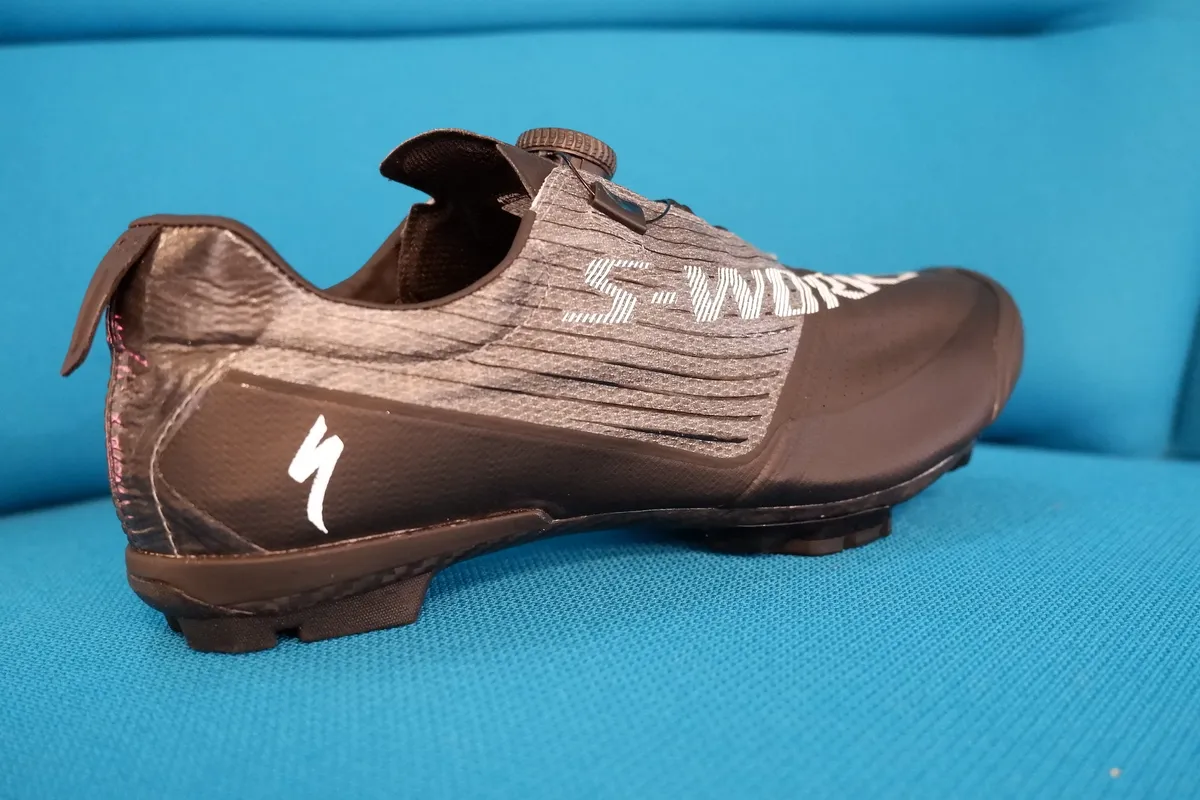
The design means there's no traditional heel cup, but Specialized says that vertically it has the right properties to hold on to the heel when pulling up on the pedals, while also having the flexibility to ensure heel hold is up to scratch.
As a consequence, when I tried my pair on for the first time, I had to use the tab at the back of the heel to prevent the shoe from collapsing under my foot.
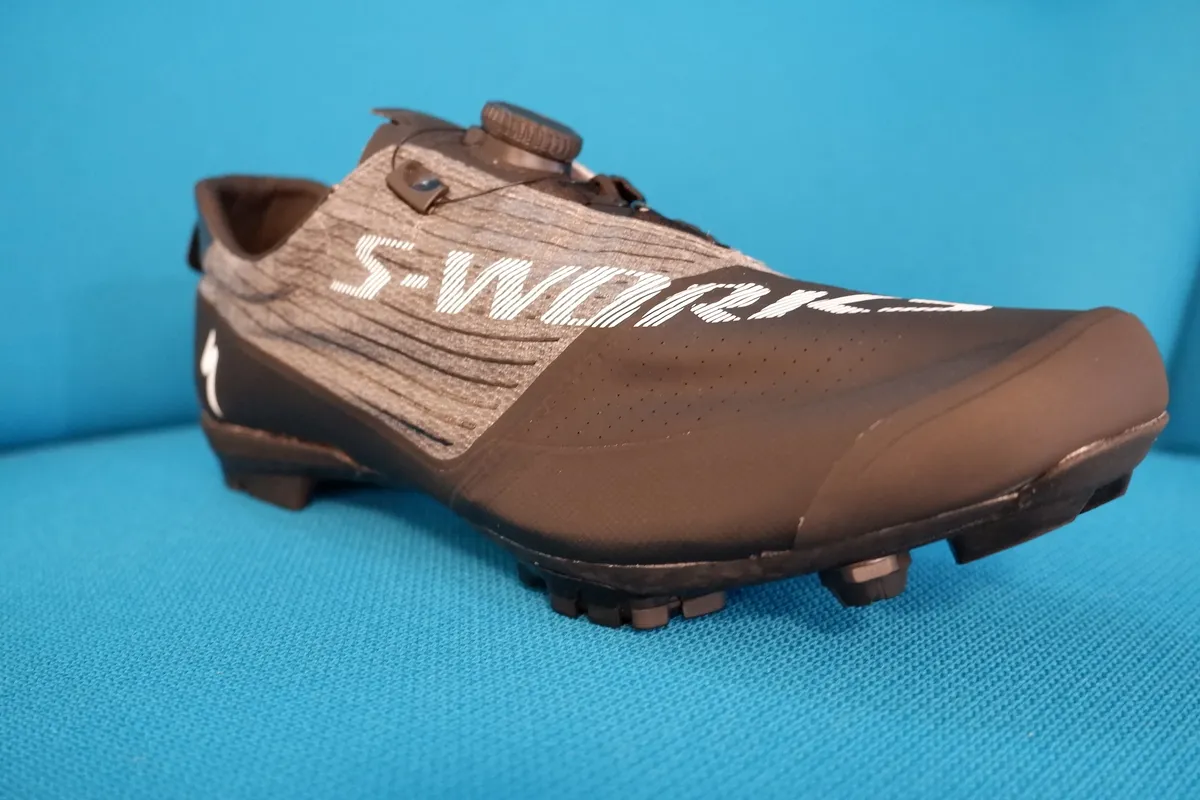
There's a sleeve over the toe box into which the foot seems to slip easily, too.
The shoe is secured with a single Boa Li2 dial, which has a fairly fine level of adjustment, and a pull-up to release. This allows the tongue to be pulled up and out of the way relatively easily, to remove the shoe.
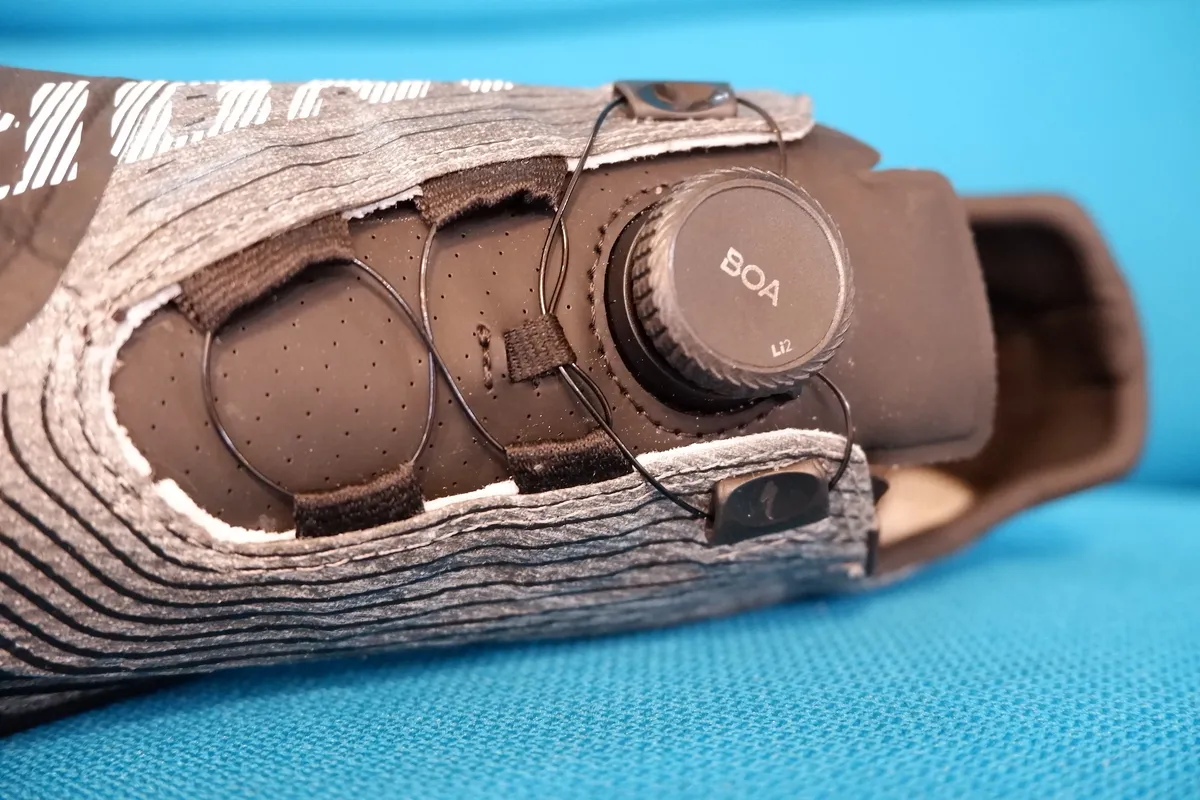
The shoes will be available in sizes ranging from 38 to 49 and come in at (a frankly rather staggering) £400 / €499.90.
Additional international pricing will be added when we get it.
Specialized's XC tyre range
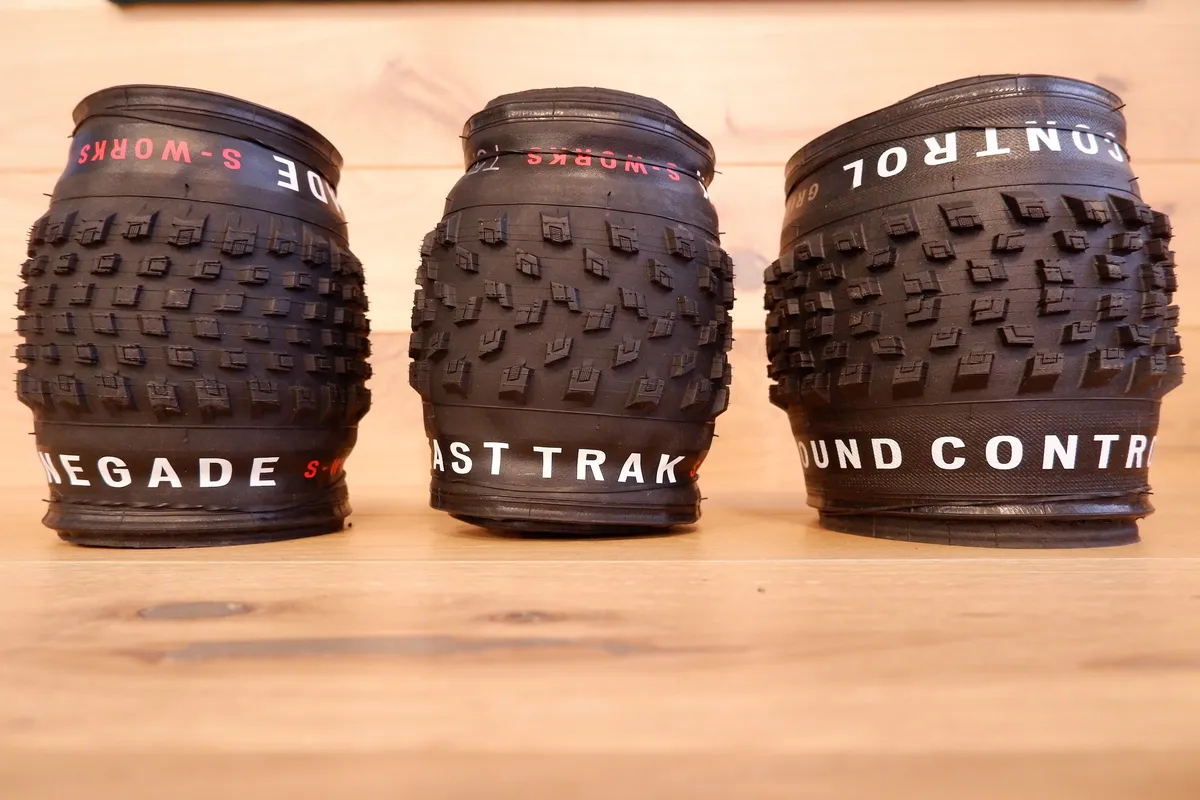
It's not just shoes that make you go fast, but tyres too.
Specialized's range of XC rubber has had a re-fresh with altered tread patterns and updated carcasses and compounds. The three tyres – Renegade, Fast Trak and Ground Control – are said to cover all eventualities from dry hardpack to wet and mud.
Following on from its chunkier tyres, the rubber is now coded with a 'T' number: T5 and T7.
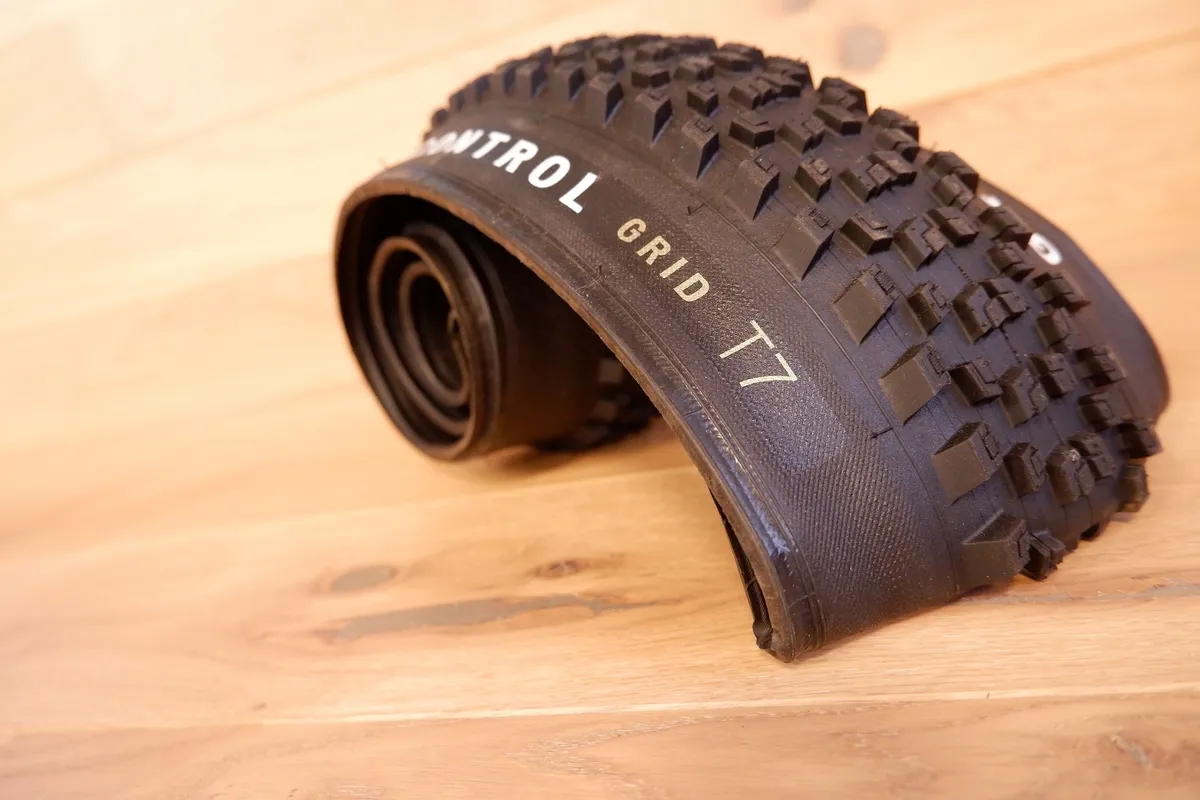
T5 rubber is designed to roll fast and wear a little slower, with a little extra tear protection, so there'll be a touch less grip on hard surfaces.
The T7 rubber is built for what Specialized calls 'Alpine XC' conditions, with a more damped feel that should increase grip and control, as well as absorb trail vibrations a little more.
The S-Works tyres get a T5/T7 mix, for a faster rolling central tread and a more controlled, smoother shoulder tread.
The treads are said to be 'Block in Block' designed, with sipes and, in places, construction from two different rubbers. The outer rubber structures are designed to support the inner rubber blocks for a more planted and stable feel.
Three casings are available too. The S-Works is the lightest offering, with less puncture protection but a more supple feel, which should, in theory, help the tyre roll faster with the lower weight marginally improving acceleration.
All three of the tyres come with an S-Works option, and all get the combined T5/T7 compound rubber.
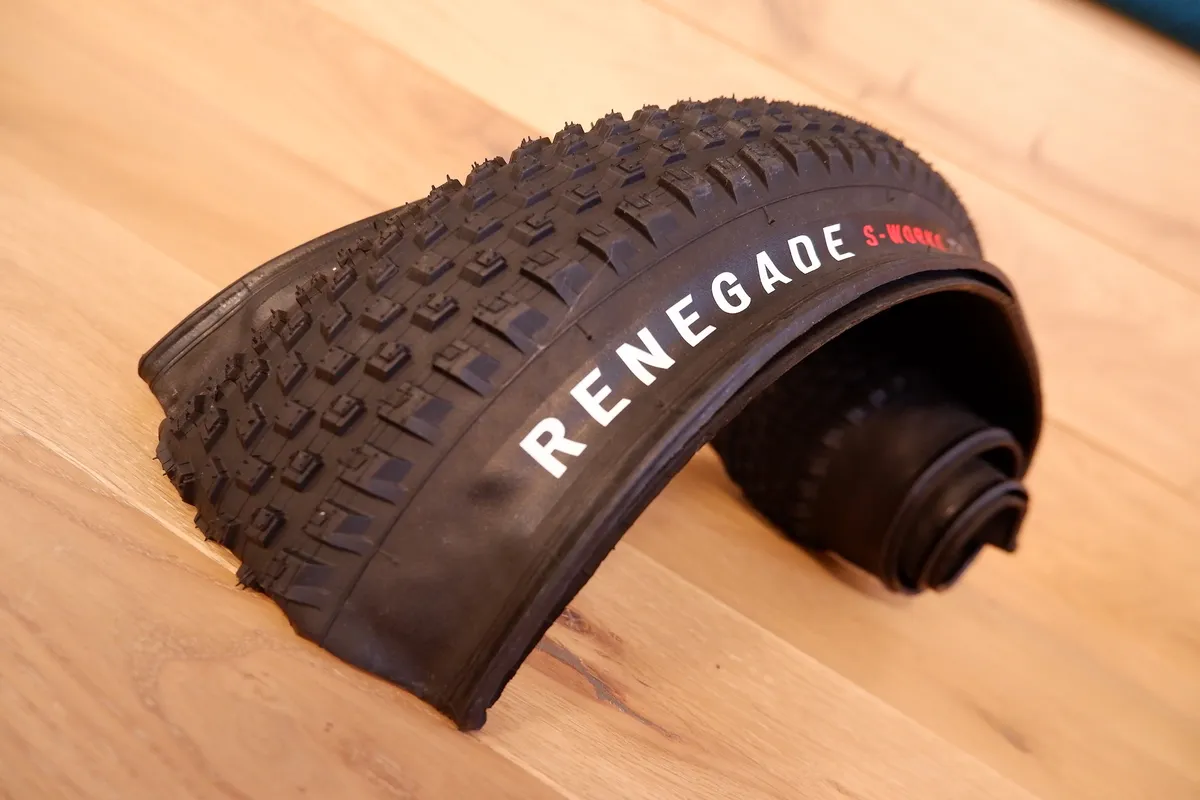
Next is the Control casing, which adds a little weight but also some puncture protection in to the mix.
This is likely going to be the most popular version for your everyday XC racer who wants some added durability and may want to reduce the risk of punctures.
The Renegade and the Fast Trak get both a T5 and a T7 version with the Control casing, while the Ground Control comes with T5 rubber only.

The toughest is the Grid casing, which has added sidewall protection. Specialized says it's ideal for riders of its Epic EVO downcountry bike.
There are Grid casing versions of all three tyres, with the Renegade coming with the T5 rubber and the Fast Trak and Ground Control coming with T7 rubber.
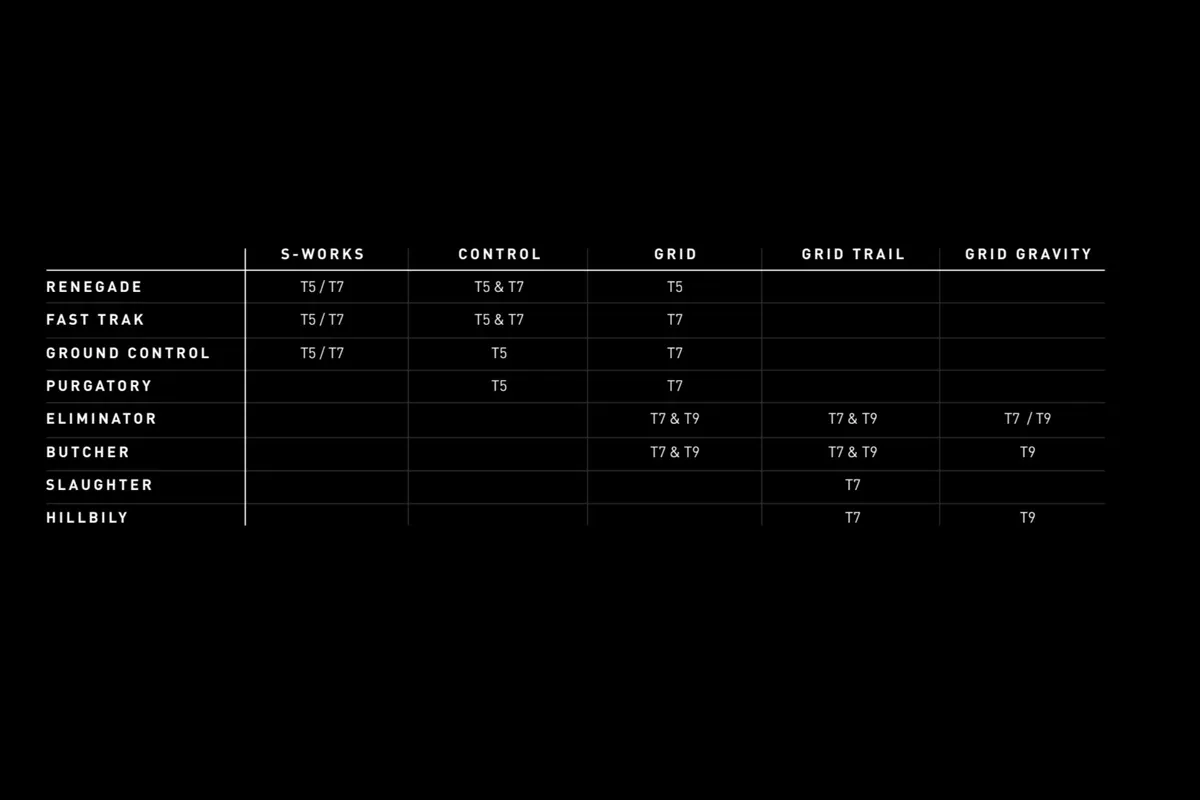
Specialized Renegade tyre details
The Renegade is the fastest rolling of the tyres, with a low-profile and a fairly closely spaced tread. The S-Works (29×2.35in) comes in at 583g on our scales, while the Control T5 weighs 652g.
Specialized Fast Trak tyre details
The Fast Trak has a slightly deeper tread, with a little more space between blocks, as well as a more pronounced shoulder. Our Fast Trak Control T5 comes in at 677g (29×2.35in), while the S-Works version is 611g.
Specialized Ground Control tyre details
The Ground Control is designed as a front tyre for damp XC conditions, but, in our experience, works well as a general trail bike tyre too, especially on the rear.
The tread is pronounced, with a design that favours grip in softer conditions and the Grid T7 we've been running weighs 858g in its 29×2.35in form.
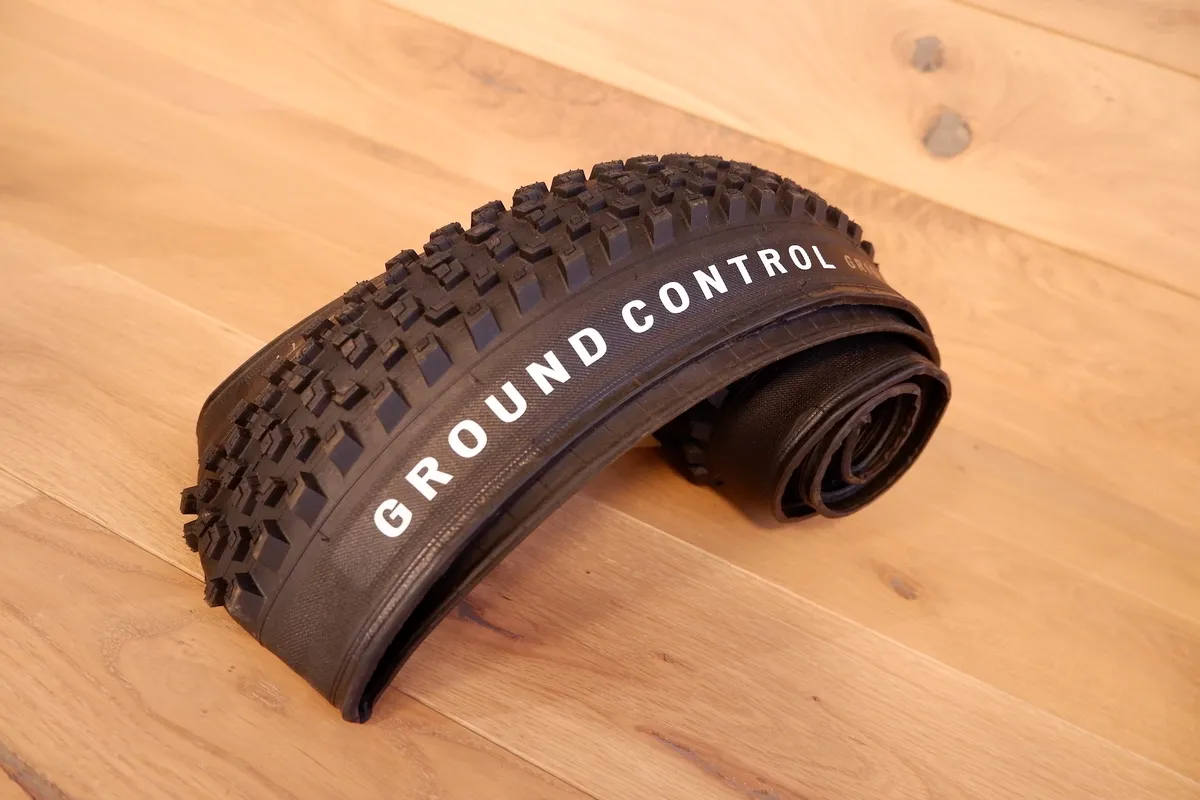
Specialized tyre pricing
Specialized is one of the better value brands when it comes to tyres.
The Control casing Renegade, Fast Trak and Ground Control tyres are priced at £40 in the UK, while the S-Works and Grid casing tyres are £45. We're currently waiting on international pricing.
Specialized Ground Control Grid T7 and Fast Trak Control T5 first impressions
I've had a chance to briefly ride a few of the new tyres on a Specialized Epic. I ran a Ground Control on the front and a Fast Trak on the rear over varied terrain, including a few rather long efforts.
In an XC context, I'm a fan of both tyres. The Ground Control is confident up front, with a decent volume on wider rims, meaning plenty of grip and confidence.
The Grid casing has a good mix of stability and compliance, so you can really push it into corners with confidence, while it's still supple enough to deal well with high-frequency chatter.
The tread has enough grunt to deal with softer conditions and while it's no mud spike, on an XC bike I think the compromise between grip and rolling speed is fair.
It's not the fastest rolling XC tyre out there by any stretch, especially in the softer T7 compound, so I'd be wary of running it on the rear of a true XC race bike because I think it would lose some snap from the bike's ride.
And in dry conditions I probably wouldn't run it on the front either – I think the Fast Trak has enough bite in the dry to be a safe race option. However, for wet XC and 'downcountry' exploits, I'd happily run the Ground Control up front.
The Fast Trak is another tyre I've had a fair bit of experience with. It rolls fast, thanks to its neatly chamfered tread pattern and seems to have reasonable bite in dry to slightly soft conditions.
In an XC race situation I would run it on the front if it were wet, but with the proviso that in the soft I might have to be a bit warier in corners.
The lack of a pronounced shoulder tread means you have to be a little more cautious. However, in the dry, the tyre happily leans onto its shoulder and carves nicely round corners in most drier conditions.
On the rear, it's more than enough of a match for the Ground Control on the front. It corners well, doesn't drag too badly and manages to bite into dirt enough to give decent traction in all but the sloppiest conditions.
Over wet rocks, I'm not convinced the T5 compound has quite the same grip as similarly specced Maxxis tyres, but I'm yet to try the S-Works tyres in these conditions.
With their lighter carcass, I avoided running the S-Works rubber on my test rides because I was on more marathon-based exploits where I was happy carrying the extra weight for puncture-resistance piece of mind.
We'll bring full reviews in due course.
